Qlik QSDA2021 Qlik Sense Data Architect Certification Exam - February 2021 Release Exam Practice Test
Qlik Sense Data Architect Certification Exam - February 2021 Release Questions and Answers
A data architect needs to build an Order Fulfillment app. The business requires front-end performance is optimized.
The OrderDate and ShipmentDate are located in different tables.
The user needs to identify the data type and must be able to:
• Show trends for orders and shipments
• Use a single filter for both date fields
• Analyze data over fiscal periods
Which steps should the data architect take to build the data model?
Refer to the exhibit.
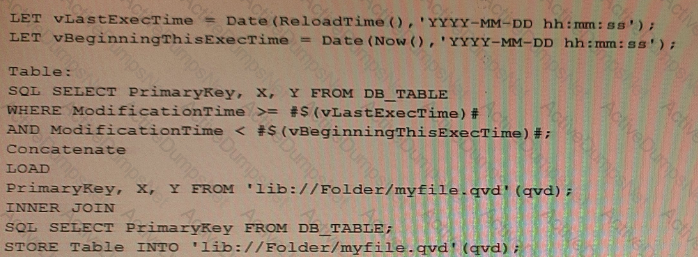
Which changes on the database will the script capture?
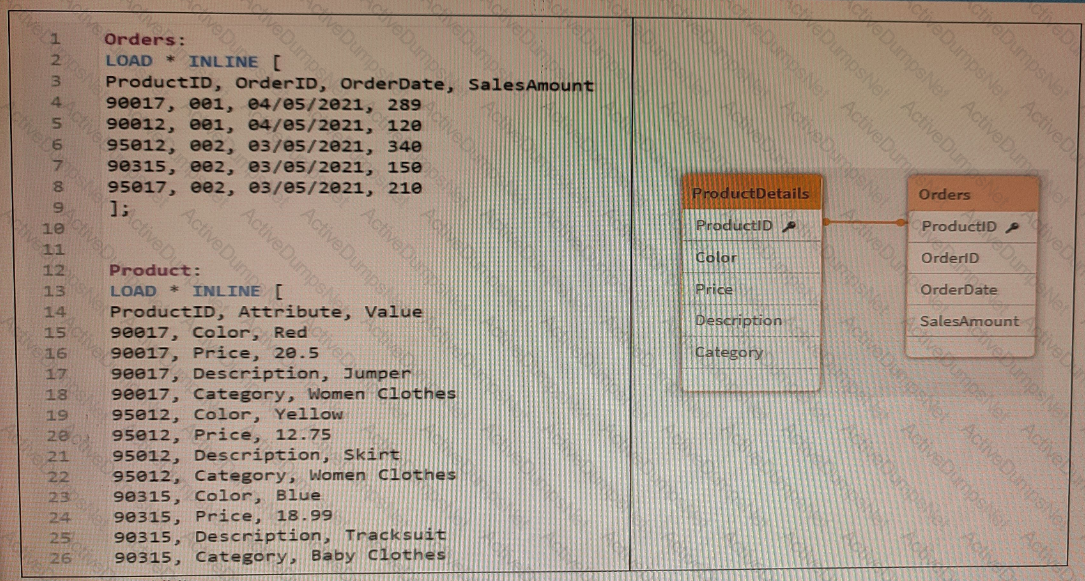
Refer to the exhibit.
A data architect is loading two tables: Orders and Product. The Product table includes attributes and values for each ProductID such as Colour, Price, Category, and Description.
The business analyst can filter by the value of these attributes. For performance reasons, the Data Model will use two tables.
Which solution should the data architect apply in the Data Load Editor to build the ProductDetails table?
For performance reasons, the Data Model will use two tables a Load Editor to build the ProductDetails table?
Refer to the exhibit.
A data architect is loading two tables into a data model from a SQL database These tables are related on key fields CustomerlD and CustomerKey.
Which script is valid to load the tables and maintain the correct association?
A)

B)

C)

D)

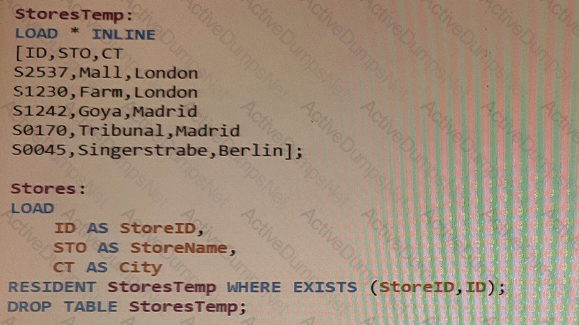
Refer to the exhibit
A data architect develops an app for Coffee4all, a coffee company with stores located throughout Europe
The script runs successfully, but the Stores table does not have any values.
What should the data architect do?
A data architect needs to add the UnitCost field from the ProductCost table in the Dim_Products Table.
Which script code should the data architect use?
A)
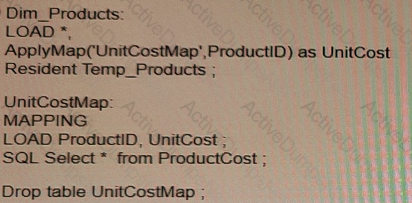
B)
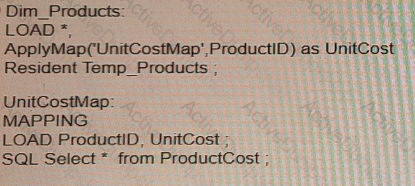
C)
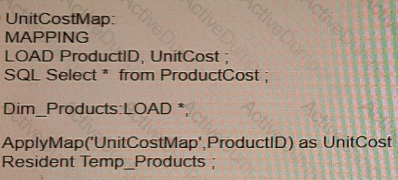
D)
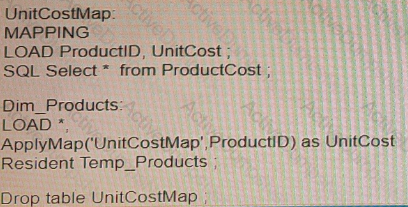
A data architect needs to upload data from ten different sources, but only if there are any changes after the last reload When data is updated, a new file is placed into a folder mapped to E A439926003 The data connection points to this folder.
The data architect plans a script which will:
1.Verify that the file exists
2. If the file exists, upload it Otherwise, skip to the next piece of code
The script will repeat this subroutine for each source. When the script ends, all uploaded files will be removed with a batch procedure.
Which option should the data architect use to meet these requirements?
